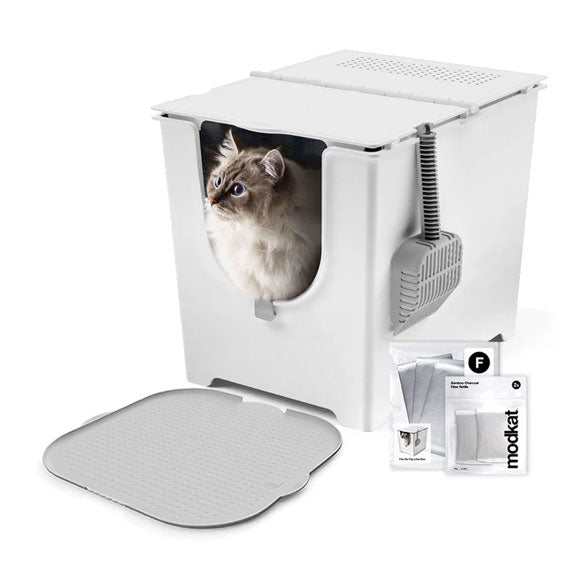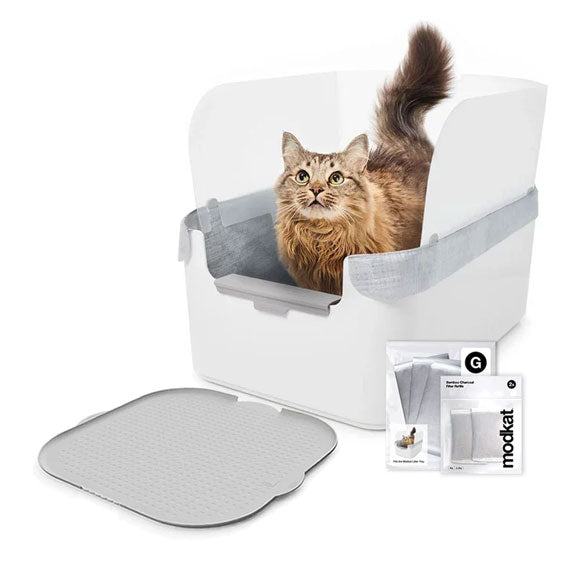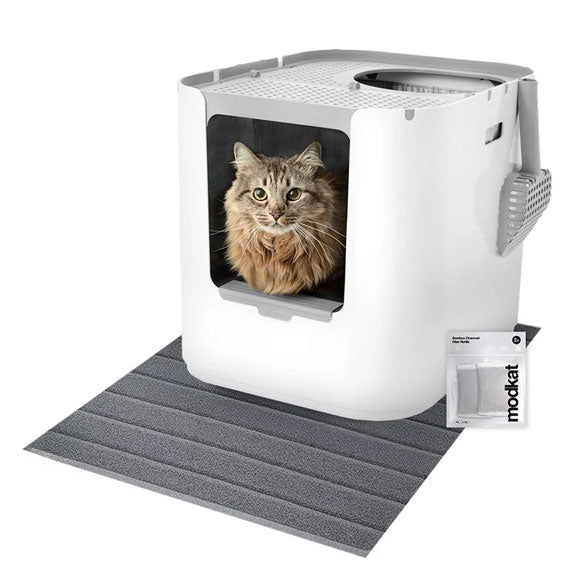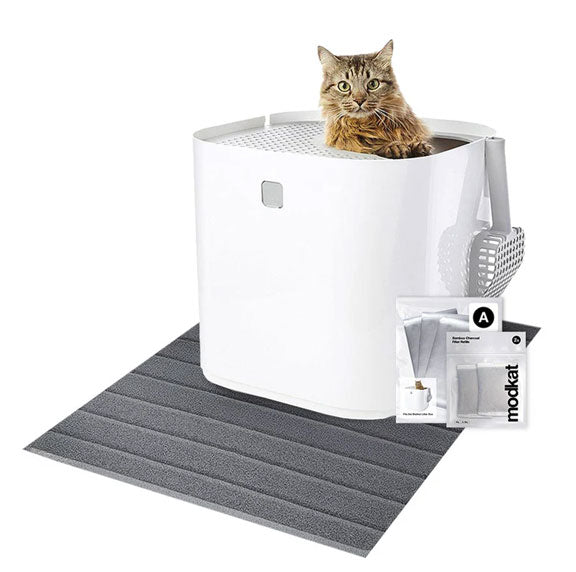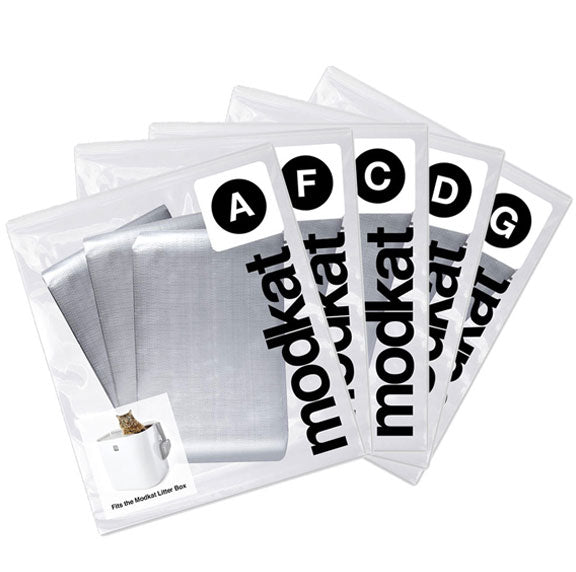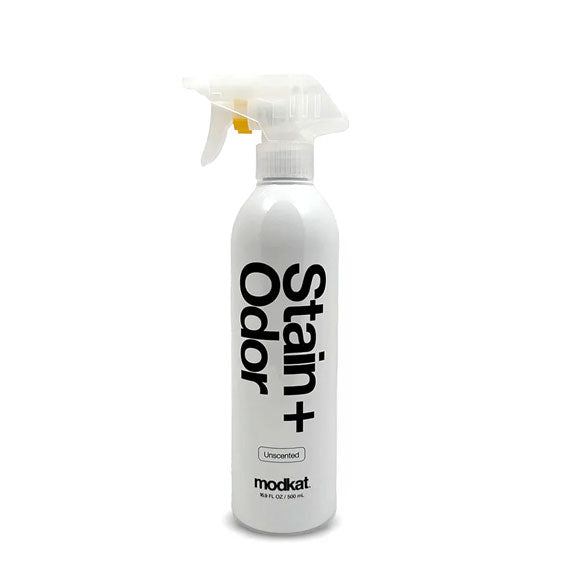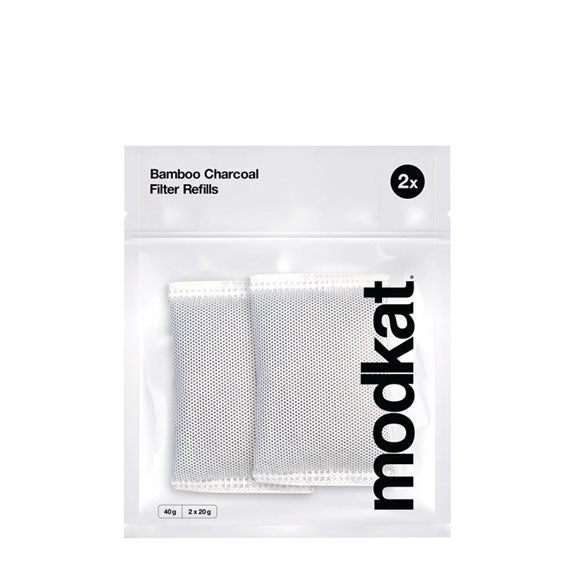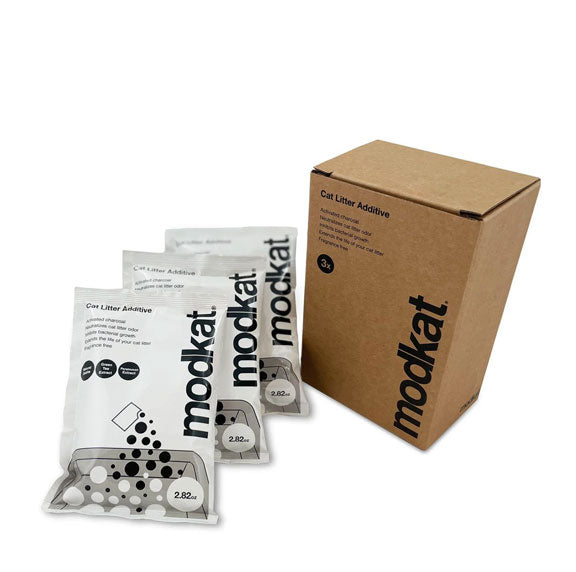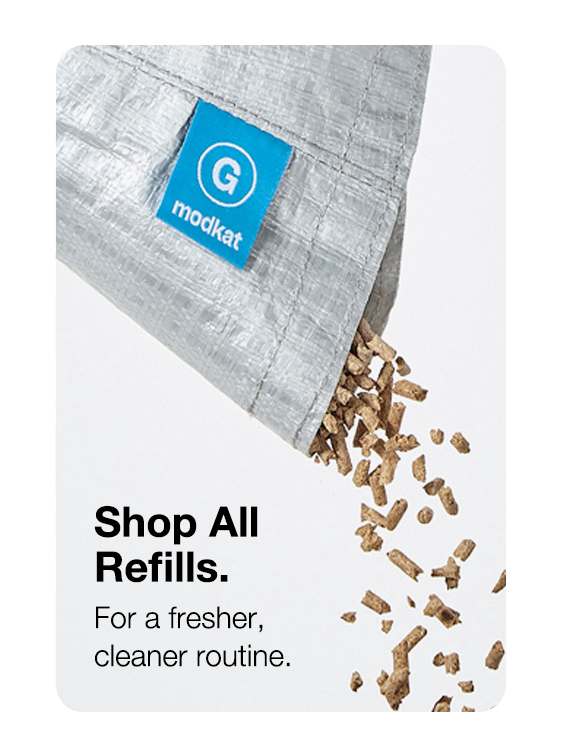Litter Boxes
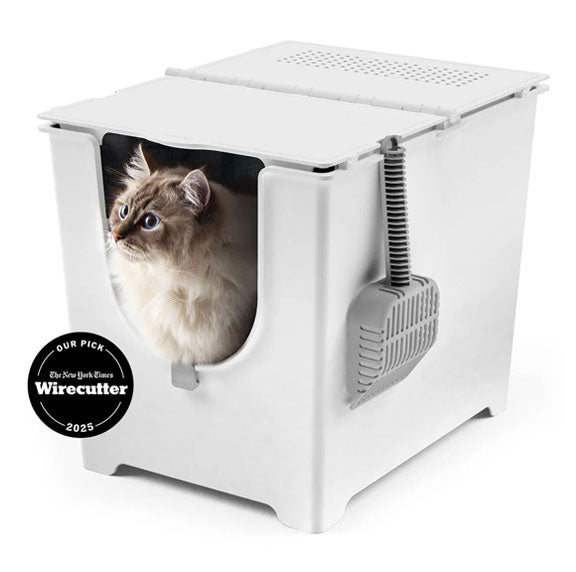
Modkat Flip
Front-Entry Litter Box
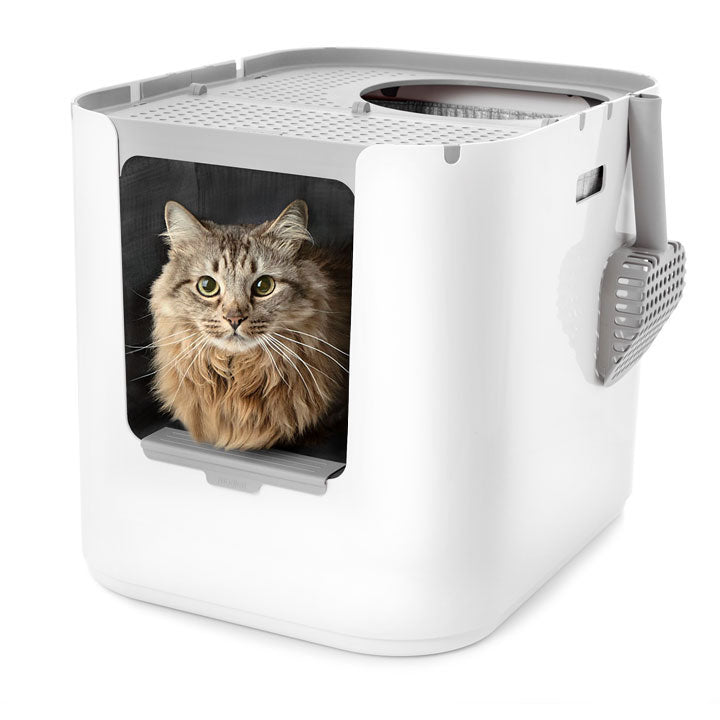
Modkat XL
Front/Top-Entry Litter Box
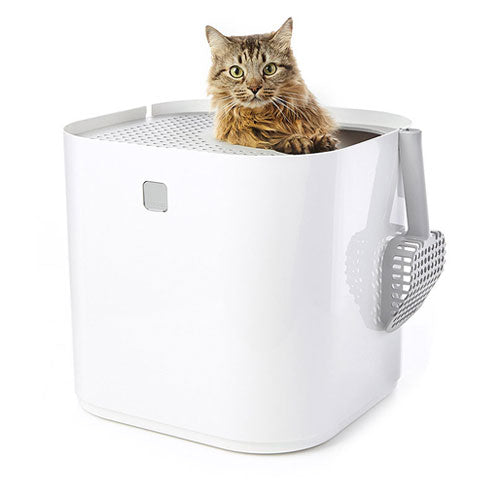
Modkat
Top-Entry Litter Box
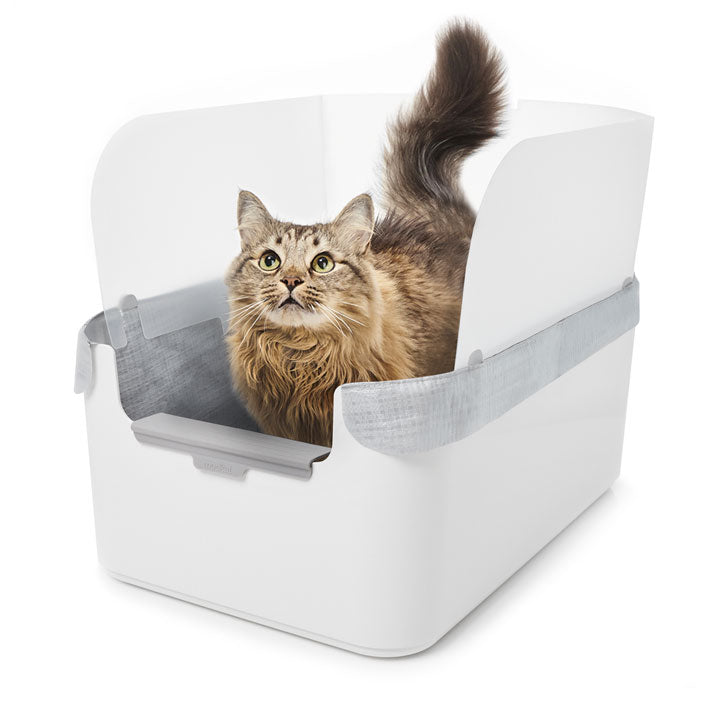
Modkat Tray
Open Litter Box
Bundles
Essentials
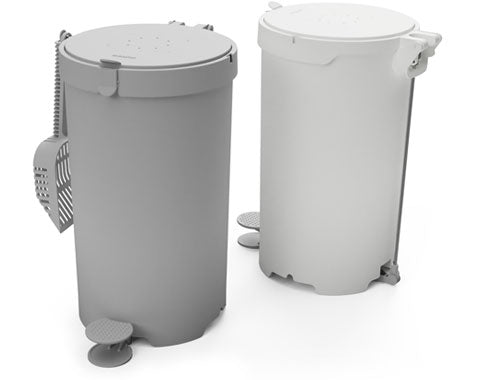
Litter Keeper
Two colors
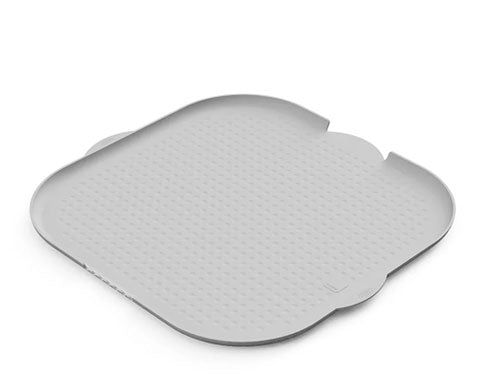
Litter Mats
Multiple styles, colors & sizes
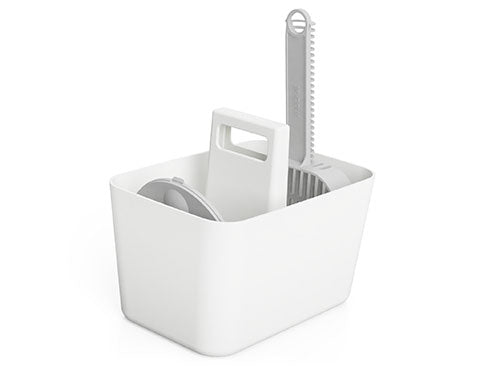
Tidy-Up Kit
Scoop holder & dustpan
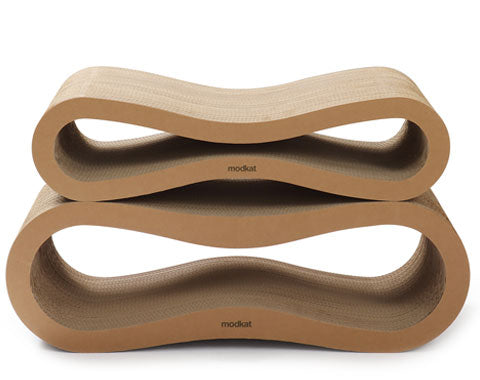
Lounge + Play
Scratchers & toys
Refills
Add description, images, menus and links to your mega menu
A column with no settings can be used as a spacer
Link to your collections, sales and even external links
Add up to five columns
Add description, images, menus and links to your mega menu
A column with no settings can be used as a spacer
Link to your collections, sales and even external links
Add up to five columns
Ultimate guide to new cat ownership.
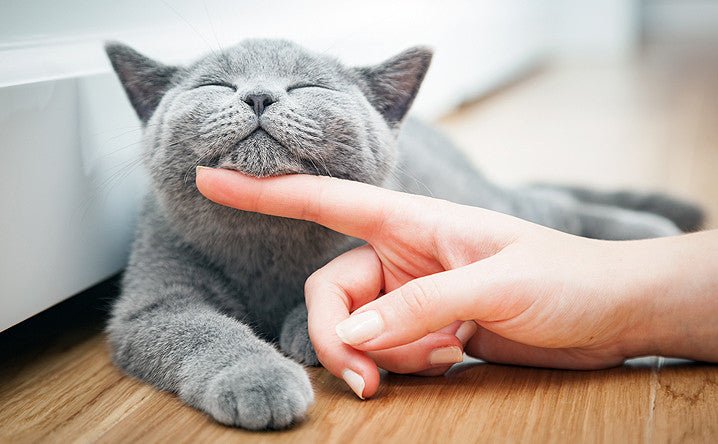
What you need to get started with your new cat or kitten.
Before you bring your cat home, be sure you have on hand everything your pet needs for their new life with you.
1. Litter box
How many boxes do you need? Most experts recommend one litter box more than the total number of cats in your house. One cat? Two boxes. Two cats? Three boxes. Jackson Galaxy from Animal Planet’s “My Cat From Hell” suggests keeping a litter box in social areas where cats and people hang out together, like the living room. You may want an attractive litter box so it won’t be noticeable out in the open. Modkat's modern cat litter boxes are part of our all-in-one, award-winning litter solution that reduces litter tracking.
2. Cat litter
Which kind of litter should you buy? We like a clumping, non-clay litter because it’s eco-friendly, easy to scoop, and appeals to cats. Definitely avoid scented litters. Most cats turn up their noses at an artificial lilac scent wafting from their box. And since clay litters negatively affect the environment, we don't recommend them either. You may need to experiment with different litters to discover what works best for you and your cat
3. Litter scoop
Part of loving a cat is cleaning its litter box. Daily scooping helps eliminate household odors and keeps your cat coming back to the right spot. When choosing a scoop, look for one with beveled edges that hooks on the side of the box. That way, you never mislay the scoop. Modkat offers a sturdy scoop for the Modkat, Modkat XL, and Modkat Tray along with a scoop for our Flip litter boxes.
4. Litter liners
A removable litter liner will make your life a lot easier since you’ll be changing the litter every week. With one of these liners, it’s simple to pour out the old stuff and refill the liner with 3-4 inches of fresh litter.
5. Play toy
Cats are curious, feisty, and fun-loving creatures. Stop by your local pet retailer to pick up a glittery ball, a feathery boa, or a cloth mouse filled with catnip. Play is a great way to keep your cat from developing obesity-related illnesses such as diabetes and heart disease.
6. Quality food and snacks
Our cats depend on us to keep them healthy. Ask your vet or feline nutritionist to recommend a brand of food and some healthy snacks.
7. Food and water dishes
You won’t want to be without these accessories when the first breakfast is served. Stainless steel is a reliable choice—durable, dishwasher safe, and harmless to cats. Consider procuring a mat to go underneath the food dishes in order to catch spills.
8. Scratching post
Cats love to scratch. It strengthens their backs, removes dead nail growth, and relieves stress. A scratching post such as the Modkat Scratcher Lounge is a great investment for your cat’s health and happiness as well as for protecting your furniture.
9. Natural cleaners
Nearly all pets shed hair, leave unpleasant scents, and have occasional accidents. Soap and water are sufficient for ordinary cleaning, but in case of a stubborn odor or stain, you’ll want to dig out something stronger. Environmentally friendly cleaning agents such as vinegar-based products, baking soda, and lemon juice are your friends.
10. Cat brush
You may not have thought about this one, but a good cat hair brush will minimize a cat’s hairballs, reduce hair bunnies, and keep your cat feeling sleek and looking shiny.
Before your cat comes home.
Cats appreciate space, privacy, and quiet time especially when they feel insecure in unfamiliar surroundings. Before your cat comes home, set up separate living quarters for his first several days. A laundry room or rarely used bathroom works well.
Furnish it with a litterbox, a feeding station, and a safe hideaway. Basic cat toys from the local pet retailer or even access to a window with a birdfeeder can provide hours of entertainment. Be sure to check the room carefully for stray items, hooks, dangling cords, or anything else that your cat might injure himself on.
Once your cat feels safe and comfortable in his new home, you can give him the run of the place.
Keeping the house safe.
Is your house cat-friendly? Harsh chemical cleansers, open tin cans, holiday decorations, and insect repellant all pose dangers to cats’ health. Be especially careful to clean up and put away antifreeze. Even a teaspoon of this sweet-tasting liquid can kill a 7-pound cat.
Check the cupboards and refrigerator for foods that may harm your new friend. Cats can suffer severe reactions to alcohol, caffeine, or chocolate. As little as a tablespoon of alcohol, for example, can put an adult cat in a coma. Surprisingly, dairy products and tuna should also be guarded. Adult cats are often lactose intolerant, and many felines are allergic to tuna that has not been processed in cat food. Keep these items out of reach of curious paws and tongues.
Be sure to move your valuables to safe ground, too. You don’t want your new cat knocking off a priceless treasure when he leaps to the top shelf of the bookcase. And he likely will.
Also consider the safety of any other pets. Will an existing cat or dog welcome a new housemate? Could your new cat be aggressive toward a more docile animal? If you’re concerned, you can review our tips for introducing a second cat into your home.
Litter box cleaning and training.
Most cats use the litterbox instinctively. If your cat is eliminating on the floor, sofa, or bed, it’s probably a matter of litterbox cleaning not litterbox training. Some cats can be finicky about their box or litter.
Never punish a cat for inappropriate elimination. Instead, scoop out the box daily, and change the litter weekly. Since a cat’s sense of smell is about 14 times stronger than a human’s, you can imagine what a used litterbox smells like to a cat. Think super gross highway bathroom—times 14. Modkat makes cleaning and scooping easy with our reusable litter liner and our handy scoop.
Be sure to choose the correct liner type for your Modkat Litter Box.
What litter are you purchasing? Most cats turn up their noses at scented litter. We recommend a clumping, non-clay, natural litter—easy to scoop, good for the environment, and loved by most cats. Try introducing a new variety to see if that helps solve the problem.
If your cat is still inappropriately eliminating, she could have a UTI or a digestive illness. Make an appointment with the vet right away.
The vet is an important member of your team.
Speaking of the vet, a long and trusting relationship with your veterinarian is vital. Check online or ask your pet-loving friends to recommend cat-friendly vets in your area.
Your vet can spay or neuter your new pet, provide medication for parasite control, check for injuries, and be a resource during any feline illnesses. The vet can also vaccinate your cat against diseases such as rabies.
While you’re in the vet’s office, ask them to recommend a nutritious brand of food.
Playtime isn’t just for kids.
Most cats adore playtime. Natural hunters, cats can indulge their predatory instincts by chasing, pouncing, and snagging a host of clever toys. Balls, bells, and boxes provide great entertainment, and if you add a quick game of cat-style laser tag using a red light, your furry friend will zonk out for hours from all the exercise. It’s a good idea to keep some toys tucked away so your cat doesn’t grow bored with the same routine.
If you adopt a kitten.
Kittens are adorable creatures, full of pizzazz and sweet to cuddle. But these tiny animals need extra-special care.
It’s hard for a baby of any species to leave home. You can help ease the transition by asking for a blanket that smells like mother and siblings.
Remember that kittens can squeeze into tiny spaces, bite through electrical cords, and become entangled in dangling drapery. Triple check your home for any dangers before your kitten arrives and during his first several months in your house.
Most kittens will naturally choose to potty in the litter box, but you need to make sure it's easy to access and pleasant to use. When you first bring your cat home, set her in the litter box and gently use her paw to scratch the sand. She’ll get the idea. Make sure the box stays clean, the litter fresh, and the entrance unobstructed. If elimination problems arise, it’s probably best to see your vet.
With this guide, you and your cat can have everything you need to launch a long, healthy, and happy life together! 🖤🐈
Shop the Modkat litter boxes and accessories to freshen up your cat litter area today!
“It looks nicer than any other hooded or open option we considered.”

Categories
Meow from Brooklyn.
Sign up and get early access to product drops, exclusive offers, and the occasional cat meme.
Similar products related to this blog:
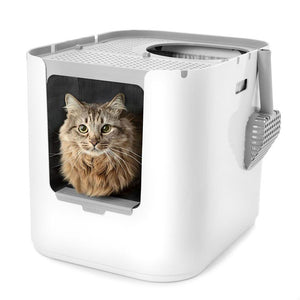
"It looks nicer than any other hooded or open option we considered."

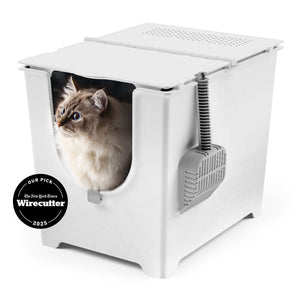
"This litter box keeps everything in, nothing gets out the sides."
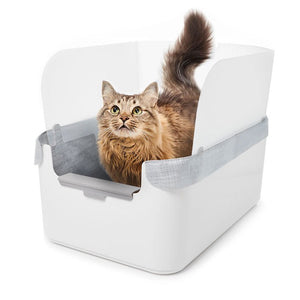
"My beautiful ragdoll cat and I both love the new Modkat Litter tray!"

